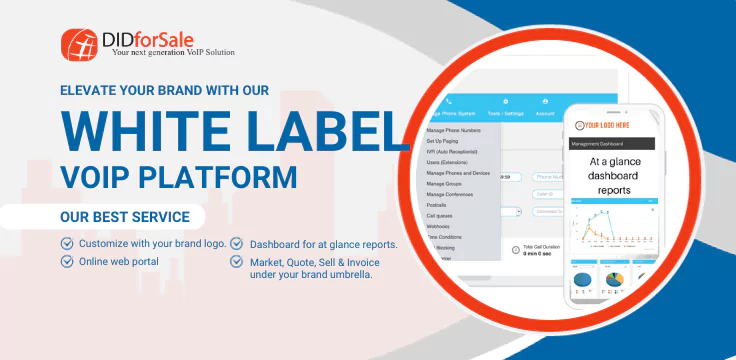Effective communication is a cornerstone of business success. But managing communication systems, such as SIP trunking, can be complex and time-consuming. This is where APIs and webhooks come in. APIs (Application Programming Interfaces) and webhooks can help automate tasks, gain deeper insights into communication data, and create custom workflows that meet the unique needs of your business. Let us explore the power of automation with APIs and webhooks in SIP trunking.
What is SIP Trunking and Why is it Popular Among Businesses?
SIP (Session Initiation Protocol) trunking is a method of delivering telephone and other communication services over the internet. Instead of using traditional telephone lines, SIP trunking uses an internet connection to send and receive voice and data traffic. This allows businesses to save money on communication costs, improve flexibility, and gain access to advanced features such as video conferencing and unified messaging. SIP trunking is becoming increasingly popular among businesses of all sizes due to its scalability, cost-effectiveness, and flexibility.
The Challenges of Managing a SIP Trunking System.
Despite the benefits of SIP trunking, managing a SIP trunking system can be challenging. Some of the common challenges include:
-
- Monitoring call quality and resolving issues
- Managing bandwidth usage to prevent network congestion
- Maintaining security and privacy of communication data
- Configuring and managing multiple SIP trunking providers and systems
These challenges can be time-consuming and require a significant amount of manual work. However, automation with APIs and webhooks can help streamline these tasks and improve efficiency.
How APIs Can Help Automate Your SIP Trunking Workflow?
APIs are software interfaces that allow different systems to communicate with each other. In SIP trunking, APIs can be used to automate tasks such as:
-
- Provisioning new SIP trunking services
- Monitoring call quality and network performance
- Analyzing communication data to gain insights
- Integrating with other business systems such as CRM (Customer Relationship Management) and ERP (Enterprise Resource Planning)
Here are some examples of API use cases in SIP trunking:
-
- Using APIs to provision new SIP trunking services: APIs can be used to automate the process of provisioning new SIP trunking services. This can save time and reduce the risk of errors associated with manual provisioning.
- Using APIs to monitor call quality and network performance: APIs can be used to monitor call quality and network performance in real-time. This can help detect issues before they impact the user experience and enable prompt resolution.
- Using APIs to analyze communication data: APIs can be used to extract and analyze communication data to gain deeper insights into call patterns, network usage, and user behavior. This can help businesses optimize their communication systems and improve performance.
- Using APIs to integrate with other business systems: APIs can be used to integrate SIP trunking with other business systems such as CRM and ERP. This can help businesses streamline workflows and improve productivity.
The Power of Webhooks in SIP Trunking.
Webhooks are a way for different systems to communicate with each other in real-time. When an event occurs in one system, a webhook can trigger an action in another system. In SIP trunking, webhooks can be used to automate tasks such as:
-
- Updating call logs in real-time
- Sending notifications for call events
- Triggering actions based on call events
Here’s how webhooks work:
-
- Event Occurs: A specified event takes place, such as a call being made or answered.
- Webhook Triggered: The webhook is triggered, sending a message to a designated URL.
- Action Executed: The designated URL receives the message and executes the pre-determined action, such as routing the call to a specific extension or recording the call.
Automating SIP Trunking with Webhooks Webhooks are a powerful way to automate the workflow of SIP trunking. Webhooks allow developers to create automated workflows that can be triggered by specific events. When a certain event occurs, such as a call being made or a call being answered, the webhook sends a message to a designated URL, triggering a specified action.
Using webhooks, businesses can automate a range of SIP trunking tasks, including:
-
- Call routing
- Call recording
- Call analytics
- Call logging
- Call notifications
Benefits of Automating SIP Trunking with APIs and Webhooks
Automating SIP trunking with APIs and webhooks offers a range of benefits, including:
-
- Increased efficiency: Automating SIP trunking tasks frees up staff to focus on other tasks, increasing overall productivity.
- Improved accuracy: Automating tasks reduces the risk of human error, ensuring that tasks are completed correctly and consistently.
- Enhanced customer service: Automating call routing and analytics can help businesses better serve their customers by quickly connecting them with the appropriate department or individual and analyzing call data to identify areas for improvement.
- Cost savings: Automating tasks reduces the need for manual labor, reducing labor costs.
Examples of SIP Trunking Automation
Here are a few examples of how businesses can automate SIP trunking tasks with APIs and webhooks:
-
- Call routing: A business can use an API to route incoming calls based on the caller’s phone number or the time of day. For example, calls from a certain geographic region can be routed to a specific call center, while calls made outside of business hours can be routed to voicemail.
- Call recording: A webhook can be used to automatically record all incoming and outgoing calls. This can help businesses improve customer service by reviewing calls to identify areas for improvement, such as training opportunities for employees or changes to call scripts.
- Call analytics: An API can be used to analyze call data to identify trends and areas for improvement. For example, if a business notices a high number of dropped calls, they can use the data to identify the cause and take steps to prevent it from happening in the future.
- Call notifications: A webhook can be used to send automated notifications to a designated email address or Slack channel when certain events occur, such as a missed call or a voicemail message.
SIP trunking is a critical component of modern business communication, allowing businesses to connect with customers and clients around the world. Automating SIP trunking tasks with APIs and webhooks can help businesses streamline their communication workflows, reduce errors, and improve customer service. By leveraging the power of automation, businesses can focus on their core competencies and deliver better customer experiences.





